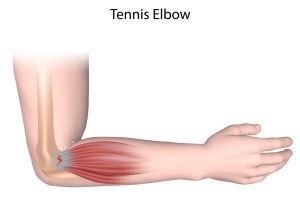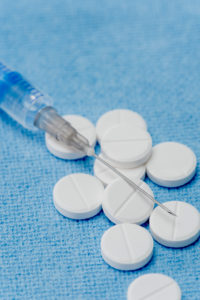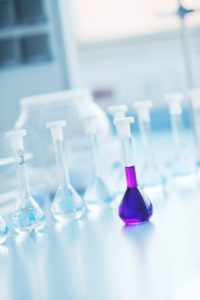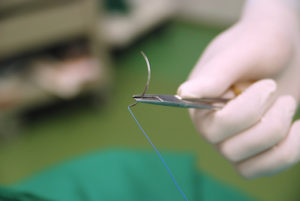Background
Definition: Lateral epicondylitis is a common, painful condition characterized by pain at the lateral side of the elbow, that increases during gripping or squeezing. Though sometimes referred to as “tennis elbow” it occurs mostly in middle aged adults regardless of sporting activity.
Light microscopy reveals both an excess of fibroblasts and blood vessels that are consistent with neovessels or angiogenesis[i]. This vascularization is a primary diagnostic feature of this condition using ultrasound. There is a variable reference to the presence or absence of tears but newer technologies invariably find micro tears in symptomatic patients.

Incidence is between 4 and 7 per 1000 patients, with a peak between 35 and 54 years of age1-4, and it usually affects the dominant arm. Lateral epicondylitis seems to be a self-limiting condition with an average duration of a typical episode between 6 months and 2 years [ii].
Authors Comments (last updated Oct 2017)
There are numerous trials of injection therapy for lateral epicondylitis. The heterogeneity of the trials is both confounding but also realistic. Variables include selection criteria, the exact nature of the injections, the measurements made, the duration of symptoms, the diagnostic criteria, whether they were blinded, controlled, or randomized, etc. Trials probably fail to measure many factors which will turn out to be critical in determining outcome. Every practitioner has to look at the evidence in relation to how he/she practices and in relation to their own experience. After 30 years of experience I have learnt that many factors never tested in trials are important but difficult to measure –patient factors, chronicity, and specific injection techniques being among the most important. The patients I am asked to review most frequently are those who have failed conservative measures and corticosteroid injections. They usually have symptoms for more than 6 months and often 12 months. Clinical trials do not address this clinical problem. Corticosteroid injections have long been accepted as a standard of care for lateral epicondylitis yet the evidence indicates they are of short term benefit only. There is no benefit in the long term and repeating corticosteroid injections is harmful. Recurrent use of corticosteroid injections contributes to chronic lateral elbow pain and causes structural damage to the tendon. Recurrent injections of corticosteroid are likely to impair the natural healing response and may contribute to chronicity.

There is no doubt, both in the published trials and in my experience, that PRP is superior and safer option. The current evidence (see below) supports it as a preferred therapy. For those with long term pain and evidence of ongoing neovascularization this is the best non-surgical option available. It is safe. Using novel ultrasound techniques, we can assess tendon elasticity and show in individual cases how the tendon remodels after PRP therapy. These patients where tendon remodeling is demonstrated symptomatically improve.
No therapy and physical therapy
Smidt et al [ii] found no difference between no therapy, physiotherapy, and
![]()
corticosteroid injection at 12 month follow-up. All were equally effective. They did find that higher pain at onset and concomitant neck pain were associated with a worse outcome.
Strength training, exercise, and stretching have been shown to decrease pain in patients with lateral epicondylitis[iii].
Corticosteroid injection
Multiple studies show reduced pain at 6 weeks but no studies show long term benefit and at 52 weeks, Smidt’s corticosteroid injection group was significantly worse on all outcomes compared with the physiotherapy group and worse on 2 of 3 measures compared with watchful waiting[2]. Gosens et al[iv] found corticosteroids had better pain and function scores than PRP up to 8 weeks but beyond 8 weeks PRP was superior and this effect became greater the longer the follow-up. See also FAQ about the corticosteroid injection process.
NSAIDS
Cochrane review of Non-steroid anti-inflammatory drugs (NSAID) 2013[v]: Although data from five placebo-controlled trials suggest that topical NSAIDs may be beneficial in improving pain (for up to 4 weeks), non-normal distribution of data and other methodological issues precluded firm conclusions.
PRP (Platelet Rich Plasma) Injections
The best current summaries of recent trials of PRP versus corticosteroid therapy are found in this 2017 meta-analysis of Bobin M et al[vi]. They concluded “Treatment of patients with LE by steroid could slightly relieve pain and significantly improve function of elbow in the short-term (2 to 4 weeks, 6 to 8 weeks). PRP appears to be more effective in relieving pain and improving function in the intermediate-term (12 weeks) and long-term (half year and one year). Considering the long-term effectiveness of PRP, we recommend PRP as the preferred option for lateral epicondylitis.”
There are multiple studies showing significant functional and pain score improvements in different clinical or trial contexts with long term follow-ups. PRP was far superior to placebo[vii] up to 38 months follow-up. PRP injections versus autologous blood[viii][ix]: both groups improved but PRP more so. In a recent RCT Mishra et al[x] compared dry needling (control group) versus PRP in patients with chronic LE (failed other therapy and symptoms > 3 months) and found no significant differences were found at 12 but at 24 weeks clinically significant improvements were found in patients treated with PRP compared with the control group.
I have identified 11 trials with either level 1 or 2 evidence supporting the clinical use of PRP for epicondylitis[iv][vii][x][ix][xi][xii][xiii][xiv][xv][xvi][xvii].
Autologous blood
In a 2010 study by Kazremi et al[xviii] they performed a single blinded randomized clinical trial comparing autologous blood injections to corticosteroid injection in 60 individuals with lateral elbow tendinopathy present for up to 12 months. The autologous blood group demonstrated statistically significant improvements in all outcomes measured at 4 and 8 weeks. Autologous blood injections demonstrated superiority to corticosteroid injections at 4 and 8 weeks in all parameters measured.
Other therapies
No benefit has been shown from extracorporeal shock wave therapy[xix].
Some short-term reduction in pain from acupuncture[xx].
Hylauronic acid therapy superior to saline in returning to sports, pain and grip strength up to 1 year [xxi]. This was done in athletes with LE.
Polidocanol no better than placebo injections at 3 months [xxii].
Botulinum toxin equivalent pain reduction to corticosteroid up to 16 weeks, but inferior at 4 weeks[xxiii]. Other trials have shown no significant benefit compared to saline[xxiv][xxv].

Surgery
Is reserved for those failing other therapies and there are several different procedures, but few trials of their effectiveness or benefit of one particular procedure over another. No controlled trails published.
References
[i] Bisset, L., Beller, E., Jull, G., Brooks, P., Darnell, R., & Vicenzino, B. (2006). Mobilisation with movement and exercise, corticosteroid injection, or wait and see for tennis elbow: randomised trial. Bmj, 333(7575), 939–0. https://doi.org/10.1136/bmj.38961.584653.AE
[ii] Smidt N, Lewis M, van der W. D. et al. (2006). Mobilisation with movement and exercise, corticosteroid injection, or wait and see for tennis elbow: randomised trial. J Rheumatol, 333(7575), 2053–9.
[iii] Bisset L, Paungmali A, Vicenzino B, Beller E. A systematic review and meta-analysis of clinical trials on physical interventions for lateral epicondylalgia. Br J Sports Med. 2005 Jul. 39(7):411-22; discussion 411-22.
[iv] Gosens, T., Peerbooms, J. C., van Laar, W., & den Oudsten, B. L. (2011). Ongoing Positive Effect of Platelet-Rich Plasma Versus Corticosteroid Injection in Lateral Epicondylitis. The American Journal of Sports Medicine, 39(6), 1200–1208. https://doi.org/10.1177/0363546510397173
[v] Pattanittum, P., Turner, T., Green, S., & Buchbinder, R. (2013). Non-steroidal anti-inflammatory drugs (NSAIDs) for treating lateral elbow pain in adults. In R. Buchbinder (Ed.), Cochrane Database of Systematic Reviews. Chichester, UK: John Wiley & Sons, Ltd. https://doi.org/10.1002/14651858.CD003686.pub2
[vi] Mi, B., Liu, G., Zhou, W., Lv, H., Liu, Y., Wu, Q., & Liu, J. (2017). Platelet rich plasma versus steroid on lateral epicondylitis: meta-analysis of randomized clinical trials. The Physician and Sportsmedicine, 2017(online), https://doi.org/10.1080/00913847.2017.1297670
[vii] Mishra A, Pavelko T. Treatment of chronic elbow tendinosis with buffered platelet-rich plasma. Am J Sports Med. 2006 Nov. 34(11):1774-8.
[viii] Raeissadat SA, Sedighipour L, Rayegani SM, Bahrami MH, Bayat M, Rahimi R. Effect of Platelet-Rich Plasma (PRP) versus Autologous Whole Blood on Pain and Function Improvement in Tennis Elbow: A Randomized Clinical Trial. Pain Res Treat. 2014. 2014:191525.
[ix] Thanasas C, Papadimitriou G, Charalambidis C, Paraskevopoulos I, Papanikolaou A. Platelet-Rich Plasma Versus Autologous Whole Blood for the Treatment of Chronic Lateral Elbow Epicondylitis. Am J Sports Med. 2011 Aug 2.
[x] Mishra AK, Skrepnik NV, Edwards SG, Jones GL, Sampson S, Vermillion DA, et al. Efficacy of platelet-rich plasma for chronic tennis elbow: a double-blind, prospective, multicenter, randomized controlled trial of 230 patients. Am J Sports Med. 2014 Feb. 42(2):463-71.
[xi] Peerbooms JC, Sluimer J, Bruijn DJ, Gosens T. Positive effect of an autologous platelet concentrate in lateral epicondylitis in a double- blind randomized controlled trial: platelet-rich plasma versus cortico- steroid injection with a 1-year follow-up. Am J Sports Med. 2010;38: 255-262.
[xii] Krogh, T. P., U. Fredberg, K. Stengaard-Pedersen, R. Christensen, P. Jensen, and T. Ellingsen. Treatment of lateral epicondylitis with platelet-rich plasma, glucocorticoid, or saline: a randomized, double-blind, placebo-controlled trial. Am J Sports Med 2013;41: 625-35.
[xiii] Omar, A. S., M. E. Ibrahim, A. S. Ahmed, and M. Said. Local injection of autologous platelet rich plasma and corticosteroid in treatment of lateral epicondylitis and plantar fasciitis: Randomized clinical trial. The Egyptian Rheumatologist 2012;34: 43-49.
[xiv] Yadav, R., S. Y. Kothari, and D. Borah. Comparison of Local Injection of Platelet Rich Plasma and Corticosteroids in the Treatment of Lateral Epicondylitis of Humerus. J Clin Diagn Res 2015;9: RC05-7.
[xv] Palacio, E. P., R. R. Schiavetti, M. Kanematsu, T. M. Ikeda, R. R. Mizobuchi, and J. A. Galbiatti. Effects of platelet-rich plasma on lateral epicondylitis of the elbow: prospective randomized controlled trial. Rev Bras Ortop 2016;51: 90-5.
[xvi] Lebiedzinski, R., M. Synder, P. Buchcic, M. Polguj, A. Grzegorzewski, and M. Sibinski. A randomized study of autologous conditioned plasma and steroid injections in the treatment of lateral epicondylitis. INTERNATIONAL ORTHOPAEDICS 2015;39: 2199-2203.
[xvii] Khaliq, A., I. Khan, M. Inam, M. Saeed, H. Khan, and M. J. Iqbal. Effectiveness of platelets rich plasma versus corticosteroids in lateral epicondylitis. JPMA. The Journal of the Pakistan Medical Association 2015;65: S100-4.
[xviii] Kazemi M, Azma K, Tavana B, Rezaiee Moghaddam F, Panahi A. Autologous blood versus corticosteroid local injection in the short-term treatment of lateral elbow tendinopathy: a randomized clinical trial of efficacy. Am J Phys Med Rehabil. 2010 Aug. 89(8):660-7
[xix] Buchbinder R, Green SE, Youd JM, et al. Shock wave therapy for lateral elbow pain. Cochrane Database Syst Rev. 2005 Oct 19. CD003524.
[xx] Ramsay DJ, Bowman MA, Greenman, PE, et al, for the NIH Consensus Panel. NIH Consensus Conference. Acupuncture. JAMA. 1998 Nov 4. 280(17):1518-24.
[xxi] Petrella RJ, Cogliano A, Decaria J, Mohamed N, Lee R. Management of Tennis Elbow with sodium hyaluronate periarticular injections. Sports Med Arthrosc Rehabil Ther Technol. 2010 Feb 2. 2:4.
[xxii] Zeisig E, Fahlström M, Ohberg L, Alfredson H. Pain relief after intratendinous injections in patients with tennis elbow: results of a randomised study. Br J Sports Med. 2008 Apr. 42(4):267-71.
[xxiii] Guo YH, Kuan TS, Chen KL, Lien WC, Hsieh PC, Hsieh IC, et al. Comparison Between Steroid and 2 Different Sites of Botulinum Toxin Injection in the Treatment of Lateral Epicondylalgia: A Randomized, Double-Blind, Active Drug-Controlled Pilot Study. Arch Phys Med Rehabil. 2017 Jan. 98 (1):36-42.
[xxiv] Hayton MJ, Santini AJ, Hughes PJ, et al. Botulinum toxin injection in the treatment of tennis elbow. A double-blind, randomized, controlled, pilot study. J Bone Joint Surg Am. 2005 Mar. 87(3):503-7.
[xxv] Placzek R, Drescher W, Deuretzbacher G, Hempfing A, Meiss AL. Treatment of chronic radial epicondylitis with botulinum toxin A. A double-blind, placebo-controlled, randomized multicenter study. J Bone Joint Surg Am. 2007 Feb. 89(2):255-60.
